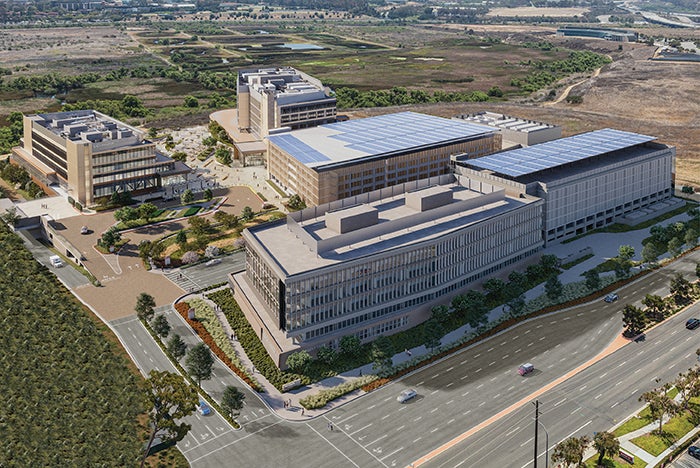UCI Health to go all-electric at new multifacility campus

UCI Health’s new hospital will help the system significantly reduce its carbon footprint to meet its sustainability goals.
Image courtesy of UCI Health – Irvine
UCI Health – Irvine in California will achieve a remarkable sustainability milestone when it opens its all-electric hospital in 2025. The facility will be home to the Joe C. Wen & Family Center for Advanced Care, the Chao Family Comprehensive Cancer Center and a 144-bed acute care hospital.
The Joe C. Wen & Family Center for Advanced Care will be an entirely new, five-story, 168,000-square-foot facility offering urgent care and a range of multidisciplinary specialty care for adults and children. It will also house and expand existing UCI Health services, such as the center for autism and neurodevelopmental disorders.
The cancer center, which is also brand-new, will be a five-story, 225,000-square-foot tower with 36 private exam rooms and numerous infusion bays and operating rooms. It will also include clinical programs in oncology, neurology, neurosurgery, orthopedics and spine surgery, digestive health, and will double the space devoted to cancer care. The new hospital will be seven stories and 350,000 square feet, with 10 operating suites and a 24-hour emergency department.
Hospitals and operating rooms often run 24 hours a day and, thus, consume massive amounts of energy and resources. Addressing this was imperative for Joe Brothman, director of facilities and general services for UCI Health, and his team, as well as University of California leaders.
“The impacts of utilizing carbon-based fuels for energy use, like natural gas, are exacerbating environmental pollution,” Brothman says. “Transitioning away from greenhouse gas emitting processes will lessen the environmental burden of the building’s operations and surrounding communities.”
The design and construction of an all-electric facility and its systems diverge from traditional building methods. For instance, a centralized steam system is eliminated in favor of multiple point-of-use steam generators, electric kitchen equipment, and multiple types of electric chillers to heat and cool all three facilities. Also, Brothman says, “The systems can be updated and modified as technology develops.”
The full extent of the project’s diminished environmental impact, carbon footprint and savings will not be known until all the buildings are finished and become fully functional, at which time the commissioning phase will begin and baseline measurements will be set.
Brothman is confident that the endeavor will achieve its goal.
“The sustainability commitment of the entire central utility plant will build on our efforts to reduce the emission of operating room gases at [our facilities],” he says. “If our operations are contributing to negative health externalities, we are not fulfilling our mission.”




